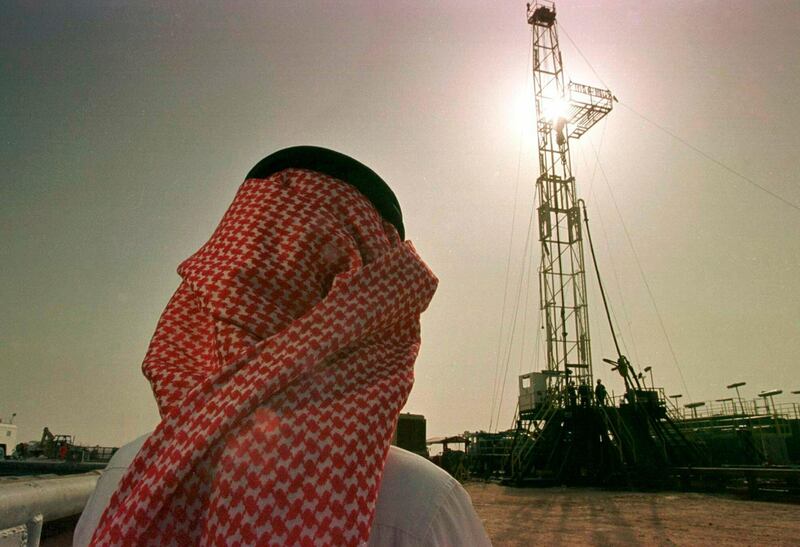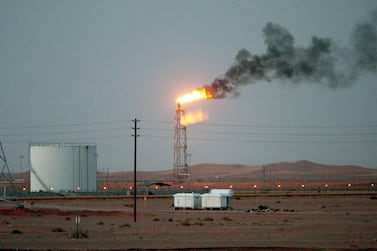Oil rose at the start of trading after Saturday’s attack on a Saudi gas facility as indications of geopolitical risks in the Middle East buoyed prices.
Brent rose by 1.36 per cent and was trading at $59.44 per barrel at 11am UAE time, as markets responded to the attack on the 1 million barrels per day (bpd) Shayba oilfield in southern Saudi Arabia.
The attack, which was carried out by armed drones operated by Yemen’s Houthi rebels, caused a fire in a natural gas liquids facility associated with the field but did not disrupt production.
Saudi Arabia is the world’s largest exporter of crude and any threats to its output have a significant impact on global oil markets. The kingdom’s energy minister, Khalid Al Falih, said production had not been affected but the attack, which is the second in three months, was intended to threaten global oil supply.
But the incident, which comes amid an environment of low crude demand, is unlikely to cause a sustained rally in oil prices, analysts say.
“The drone attack does not alter the weak fundamentals facing the oil market. Global economic growth has slowed down and will continue slowing as a result of the US protectionist stance and its trade wars with China, Europe, Canada and Mexico,” said Nasser Saidi, president and founder of Nasser Saidi & Associates.
“We are seeing a sharp drop in trade volumes and values and in investment and PMI [purchasing manager’s index]. The result is lower demand for oil and oil prices. Unless there is a major military confrontation in the [Arabian] Gulf that could lead to extended supply interruptions, we should not expect an impact on oil prices,” he said.
Prices barely moved when Houthi-operated drones attacked two pumping stations along an east-west pipeline in May. The pipeline has a capacity of 5 million bpd and transports crude from the kingdom’s oil-rich Eastern Province to export terminals along the country’s western Red Sea coast.
Markets have been weighed down by a crude inventory overhang from the surplus of US shale as well as low demand from top oil buyer China, which has seen its economy take a significant hit from the trade war.
Brent has fallen below $60 per barrel since US President Donald Trump announced the latest set of tariffs against China. Mr Trump, who labelled Beijing a “currency manipulator” in line with his campaign promises, said the US would levy a 10 per cent tax on $300 billion (Dh1.1 trillion) worth of Chinese imports. He later postponed the implementation of the tariff set for September 1 to December 15 to avoid affecting the US Christmas shopping season.








